Perennials
Hosta
One of the most decorative representatives of the "shade-loving perennials" group. Large fleshy leaves come in completely different shades: from solid green or light green to variegated varieties with white, yellow, even blue spots.
Hosts can be planted separately, but are best used in prefabricated beds in shady areas. These garden perennials differ from each other not only in color, but also in size: there are both very small species (up to 10 cm in height) and huge (from 70 cm).
Fertilize the host not often (once every 10-14 days) and do it strictly until mid-summer. After the plant should shed its peduncles and prepare for wintering.
The only principal requirement hosts - moist soil. Do not forget to water regularly and your hosts will grow well for more than one year.
Geichera
Spectacular herbaceous shade-loving plant with bright leaves resembling grape leaves. But the main advantage of foliage is considered not the shape and large size, but the color: even bushes growing in the shade can change the palette several times per season. From delicate yellow-green to dark burgundy purple with well-visible veins.
Heuchera feel great in the shaded area of the flower garden. Regardless of the light level, they bloom from late June to early August. The flowers are not decorative, they resemble pink bells on an elongated stem. Like hosts, geychers love water, requiring two watering times on hot summer days. If the temperature is average, it is enough to water once every 2-4 days.
Advice! If the geykhera in the composition plays the role of a decorative leafy flower, cut the peduncles at the primordial stage. So the plant does not waste its vitality on flowering and preserves the beauty of the leaves.
Primrose
A miniature perennial shade-loving flower for the garden is one of the first heralds of spring. Primroses bloom early, therefore they belong to primroses. But to achieve successful flowering year after year, gardeners will have to pay a little attention to primrose early in life..
First, when growing a primrose from seeds, keep in mind: it will be possible to plant it in open ground only in the second year of life (at the end of May or September-October). Seedlings are placed in the most shaded areas - it grows well in the shade of trees or shrubs.
Before the first winter (or every year if the climate is harsh), the primrose must be covered with foliage or straw. In the spring, after waking up, cut off last year's foliage.
Fern
The Polypodiophyta family is one of the oldest in existence. The first species appeared on Earth more than 400 million years ago and are still successfully grown: in indoor, garden, wild conditions.
One of the secrets of the ferns' success is their simplicity in living conditions. All the plant needs is partial shade and high humidity. To ensure the former, choose to land fence spot or under trees, bushes.For the second, it is important not only to regularly water the bush, but also to mulch the ground with sawdust, bark, leaves. Mulch has excellent moisture retention, providing the best possible living conditions.
Important! In direct sunlight, the fern leaves will burn, the appearance of the plant will deteriorate.
Flowering plants
Astilba
The most popular and beautiful shade-loving flowers for the garden. Despite the size of an adult plant (up to 120-200 cm in height), astilba is not a bush, but a herbaceous variety of the saxifrage family.
There are a lot of astilba subspecies, they differ:
- By size... There are varieties with a height of both 10-20 and 150-200 cm.
- Color... Lush inflorescences are white, purple, scarlet, pink.
- A month of flowering... The early varieties are pleasing to the eye already at the end of June, the later ones bloom in August.
Good moisture is important for the successful growth of astilba in a shady garden, so be sure to mulch the soil. The composition of the soil is no less important - potassium and phosphorus contribute to lush flowering, therefore, for fertilization, choose complexes with these elements in the composition.
Dicenter
Friendly shade-loving garden flowers whose flowers resemble hearts in appearance. There are few shades - pink, white, lilac or red are less common. Suitable for growing in a well-lit or shaded area.
Plants in the shade are more luxuriant, bloom later, but bloom longer. In abundant sunlight, they will bloom earlier, but the bush itself will be scanty, small.
In order for the dicenter to grow well, to bloom actively, it is required to adjust the watering. The flower loves high humidity, but if water stagnates in the roots, they can rot. Therefore, it is advisable to pre-pour drainage into the planting site. If this is not done, try to loosen the soil after each watering.
Pelargonium
Geraniums are successfully grown not only in indoor conditions: in pots on the terrace or in the open ground in the garden, they grow and bloom no less successfully. Shady areas for pelargoniums are more of a compromise than a necessity: they are still best suited for diffused bright light. But even in the shade, the bush will be able to adapt, please with its decorative inflorescences.
Growing in open ground can be difficult: the fact is that geranium is not a rhizome plant. That is, it cannot winter right in the garden. Therefore, pelargonium must be dug up in the fall, transplanted into a pot and taken into the house.... And in the spring, return to the ground.
Advice! If you do not want to transplant every spring and autumn, choose container floriculture: flower pots are taken out into the street in the spring and brought into the house in the fall.
Lily of the valley
Low (up to 25 centimeters) bushes are ideal for the foreground in shady flower beds, cross-borders, rock gardens. Lilies of the valley are among the first to bloom - in early spring. In warm regions, fragrant white flowers may appear in April, in others they can be seen in early to mid-May. Not only flowers are considered decorative, but also leaves: dense leaf plates retain their appearance until August.
When choosing a lily of the valley as an addition to a flower bed, remember: this plant, which is cute at first glance, is extremely poisonous. With its one smell, it can crowd out and kill many neighbors. Ferns, aquilegia, lungwort are not afraid of lily of the valley.
Advice! When choosing among small shade-loving plants for a summer residence, also pay attention to forget-me-not, violet, periwinkle.
Shrubs
Euonymus
One of the favorite plants of landscape designers: beautiful, unpretentious, fast-growing. The year-round decorative appearance allows the use of euonymus both singly in a composition (for example, a cross-border), and in a hedge. Branches are easy to cut and shape.
Minimal care: rare watering (1 time in 7-14 days, watering is not required in a rainy summer), top dressing 2 times a year (spring, autumn).
Not all species grow well in the shade; variegated for greater decorativeness, sunlight is needed.Example: euonymus forchuna, gracilis, emerald gold. IN shaded place feel good warty or European varieties.
Important! All parts of the plant contain poison - not recommended for growing in areas with small children and animals.
Cotoneaster
Another unpretentious shrub with small leaves and red berries. Thanks to the combination of rich green and scarlet, the cotoneaster looks very decorative.
Bush care is minimal: abundant watering once every 2 weeks (in the absence of rain), loosening the soil after each watering, spraying the above-ground part from the shower (to remove dust and return a beautiful shine). Sanitary or decorative trimming - as required. The plant tolerates a haircut well, suitable for the formation of hedges.
The cotoneaster survives the winter well, usually does not require additional insulation. But if there is little snow in your area, and temperatures drop to -20 and below, it is better to cover the plant with a special material.
Barberry
Plants of the genus Berberis are good at any time of the year: juicy, tender young foliage appears in early spring, clusters of bright orange flowers bloom in June, and green berries in July. By August-September, the berries and leaves turn red, the shrub literally "flashes" with autumn color.
It is not for nothing that barberry is considered a beginner's plant, because growing it in the garden is no more difficult than a fat woman at home. The main thing is not to flood and protect from direct sunlight.... To prevent the roots from rotting, lay drainage in the pit in advance.
After the shrub has taken root, it should be watered once every 5-7 days during a drought period, once every 14 days in normal weather. If it rains from additional watering, you should refrain.
From fertilizers, nitrogen-containing fertilizers are applied (once every 2-4 years), potassium and phosphorus (after flowering).
Hydrangea
This perennial flowering shrub can be classified into any of the categories listed above. Hydrangeas are recognizable by their lush caps of inflorescences of blue, purple, pink, white. In height, the bush can reach 3 m, but more often - 1-1.5 meters.
The main requirement of hydrangeas - moisture. They love water very much, so you need to water it often enough - twice, or even three times a week during the heat (depending on the soil).
As in the case of geraniums, hydrangea does not like shade too much, but it grows well in it. However, it is best to choose areas where the sun hits at least a little in the morning or evening. The plant must be protected from midday rays, otherwise beautiful flowers will burn and wither under ultraviolet light.
The presence of a shadow on the site is not a reason to write off the shaded area from the accounts. Pick the right plants, provide the right care, and enjoy the greenery around your home!

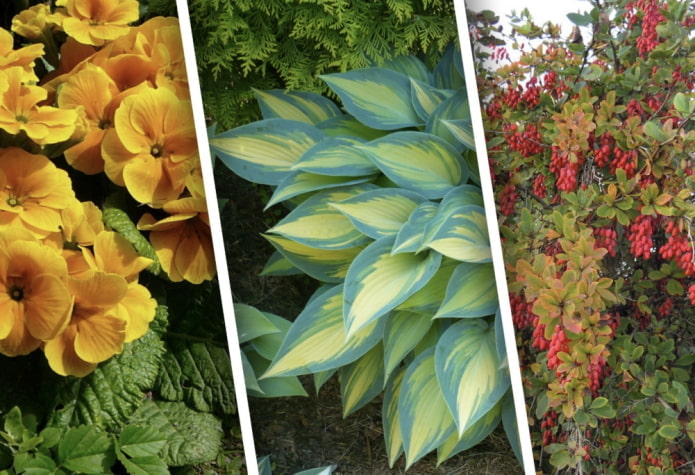
 10 practical tips for arranging a small kitchen in the country
10 practical tips for arranging a small kitchen in the country
 12 simple ideas for a small garden that will make it visually spacious
12 simple ideas for a small garden that will make it visually spacious

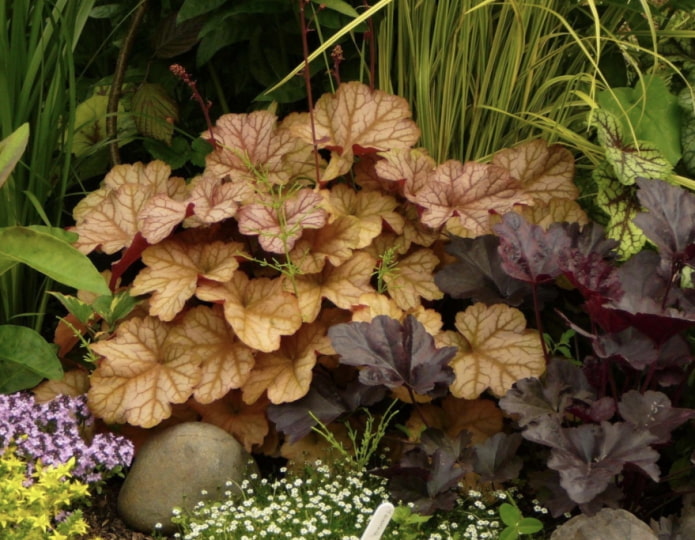
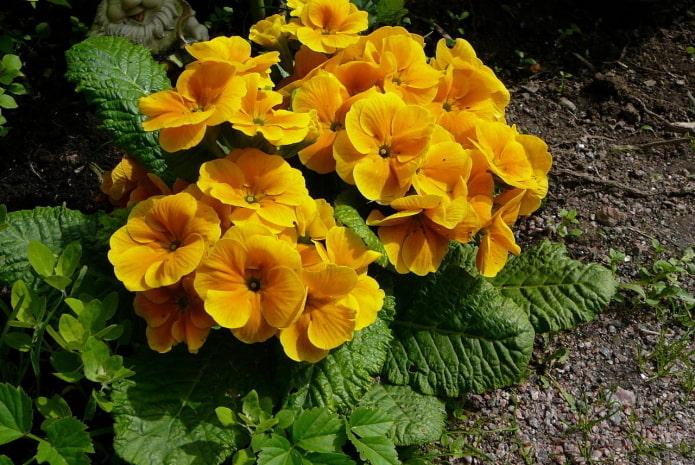


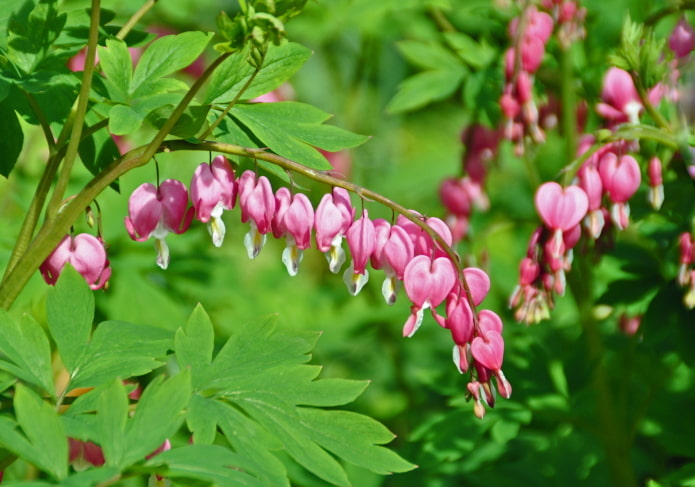
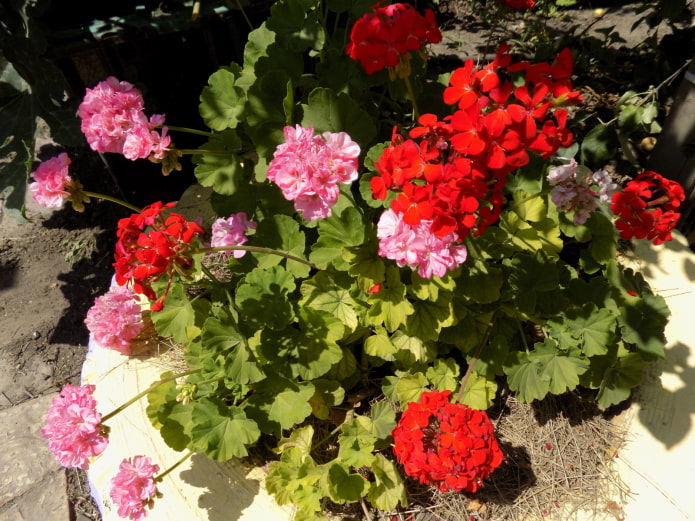
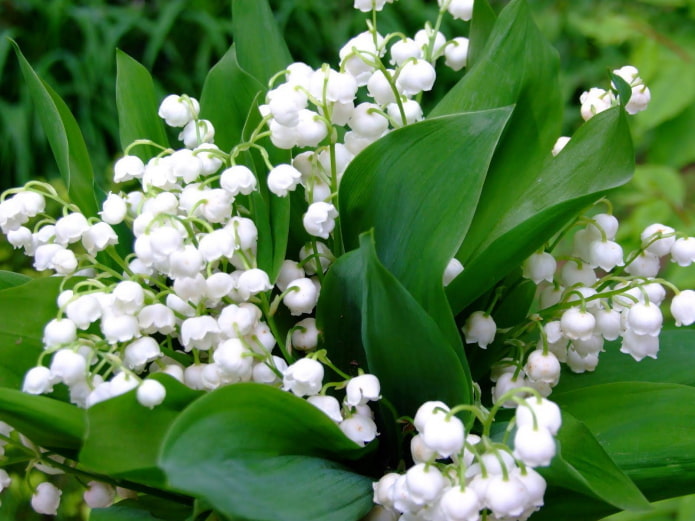
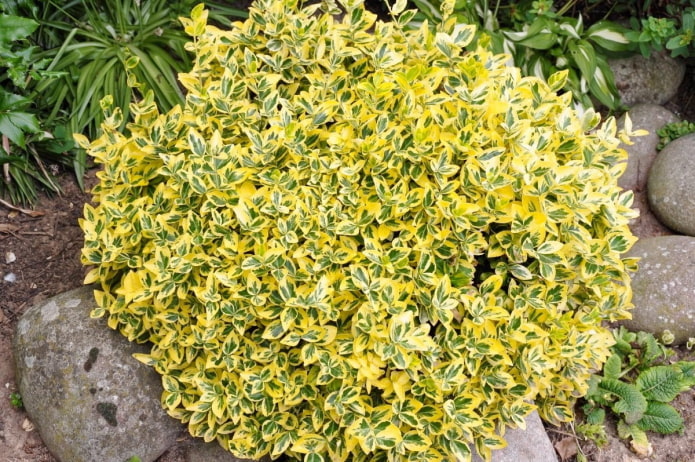
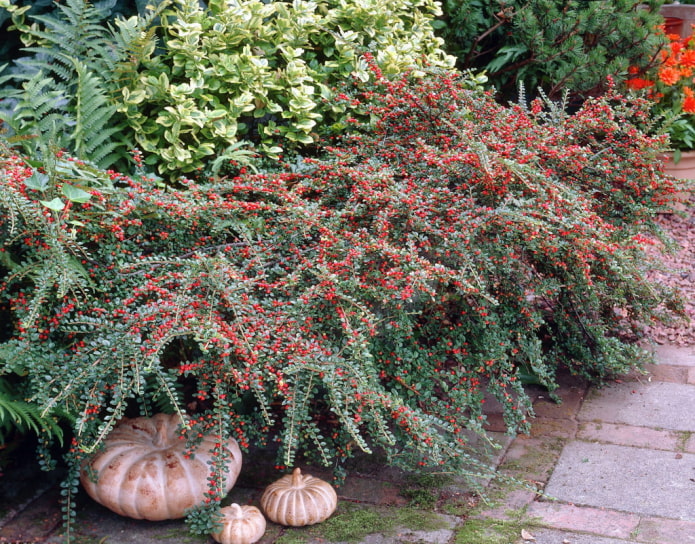
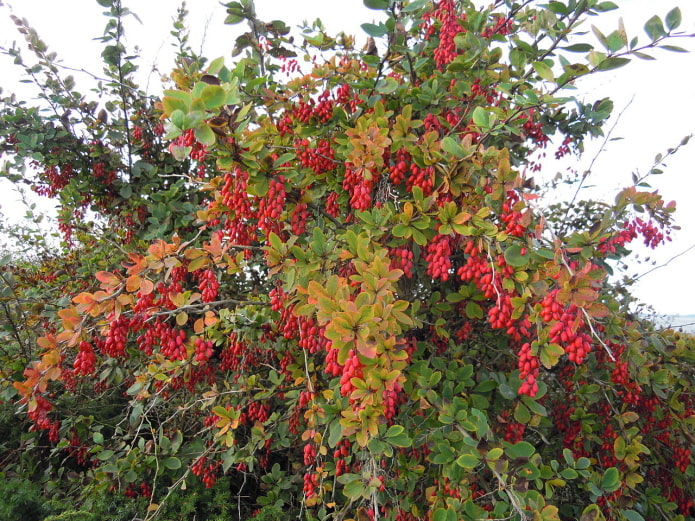
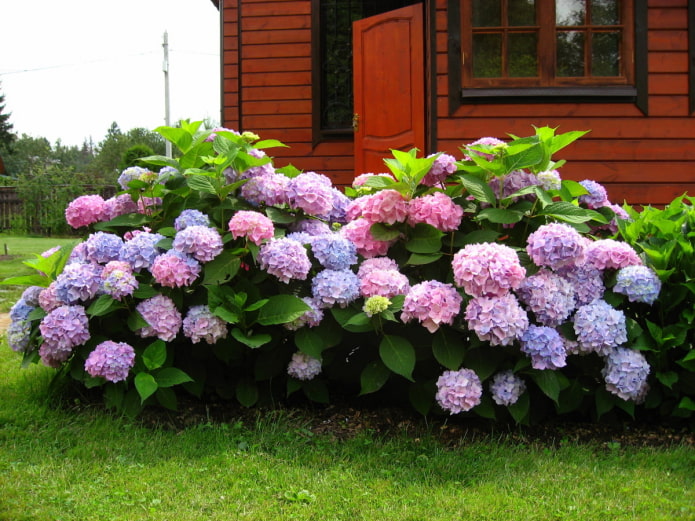
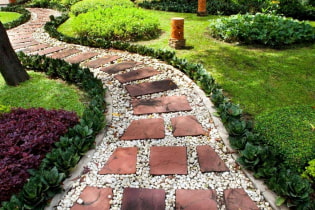 How to decorate garden paths beautifully for a summer residence?
How to decorate garden paths beautifully for a summer residence?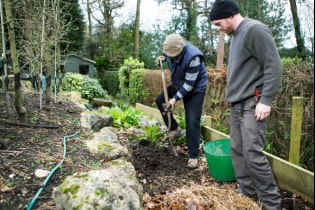 What fertilizers to use in spring?
What fertilizers to use in spring? How to use gabions on the site?
How to use gabions on the site?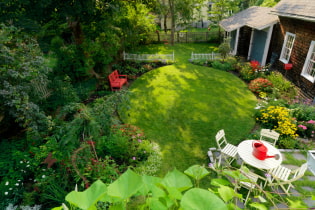 Landscaping of a summer cottage on 6 acres
Landscaping of a summer cottage on 6 acres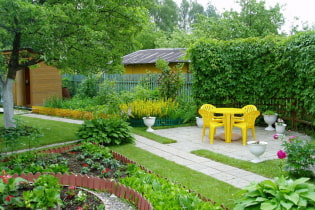 How to arrange the landscape design of a suburban area of 4 ares?
How to arrange the landscape design of a suburban area of 4 ares?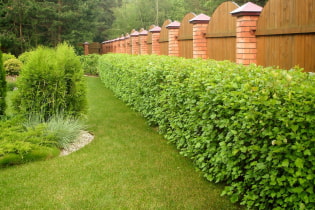 What plants can you make a hedge?
What plants can you make a hedge?